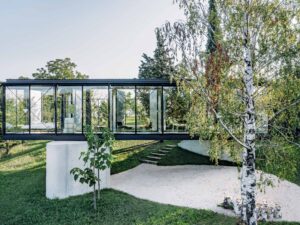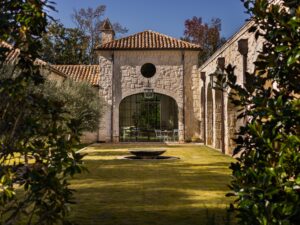Table of Contents
- Tony Duquette Aiming for Maximum Impact
- How did you first meet Tony Duquette?
- What informed his eye early on?
- To what do you attribute his lasting cultural imprint?
- What drew him to the “more is more” aesthetic? Why did he want to create vibrant sensory worlds for us to live in?
- What was his opinion of modernism?
- Did Los Angeles influence his aesthetic?
- How did Mr. Duquette inform American design during his lifetime?
- How is Tony Duquette Studios doing the same today?
- How significant is Dawnridge to you?
- What might surprise us to learn about Tony Duquette?
Tony Duquette Aiming for Maximum Impact
As CEO and creative director of Tony Duquette, Inc., its studio headquartered at Dawnridge,—the designer’s storied Shangri-La in Beverly Hills— Duquette’s decades-long collaborator, Hutton Wilkinson, helms the brand’s many endeavors. There’s a fine jewelry line; licensed products, including furniture for Baker, lighting for Remains Lighting, textiles for Jim Thompson, porcelain for Mottahedeh, and a carpet collection for Patterson, Flynn & Martin launching this fall.
These, along with a bevy of interior projects; most recently, an architectural and interior overhaul of a mid-century home in Beverly Hills and a penthouse apartment on Fifth Avenue. Forthcoming are a beach abode in Newport Beach and 35 public areas in a large condominium project in Century City. There’s even a Miami hotel on the docket.
Here, Hutton Wilkinson on Tony Duquette then—and Tony Duquette Studios now.
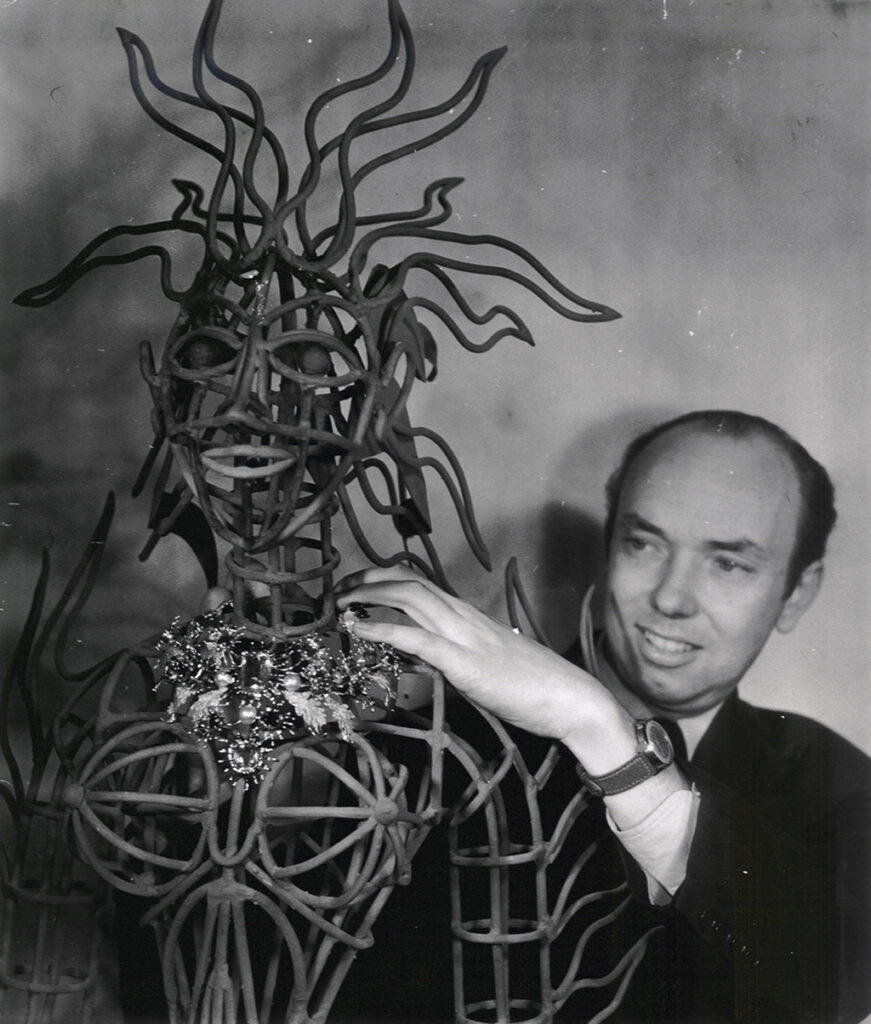
How did you first meet Tony Duquette?
I wanted to work with Tony Duquette since I was in 7th grade. I’d read about him and his wife… how they lived in a silent film studio, how their drawing room was 150 feet long, 28 feet wide and 28 feet tall. I saw photographs of Tony sitting on the stage of his studio, on a throne from the Chapultepec Palace, wearing the robes of a Cardinal, and I said to my very square architect father, ‘This is what I’m interested in,’ to which he replied, ‘You are 100-percent crazy!’ I got my chance to work with Tony as a volunteer when I was 17.
I apprenticed for two years, and then worked as an assistant designer. … We ultimately became successful business partners. About five years before he died, Bergdorf Goodman invited us to make a collection of one-of-a-kind jewelry using precious and semi-precious stones set in 18K gold, so we did.
At that point, I purchased his business as well as the international trademarks to his name. As I was a designer for Tony Duquette since 1972, the transition in the design aesthetic of the company since his death in 1999 has been seamless.
What informed his eye early on?
His mother was born in London and was a concert cellist. His great uncle was Peter Paul Marshall, the business partner of the pre-Raphaelite artist and designer William Morris. The name of their Arts and Crafts movement firm was Morris, Marshall, Faulkner & Co.
I think you can trace Tony’s interest in the arts to his worldly English mother, and you can see in my books his interest in the theater by looking at his creation, at 10 years old, of a hand-carved Art Deco-style puppet theatre in the manner of Bakst or the Ballets Russes.
To what do you attribute his lasting cultural imprint?
After a maximum of minimalism, the world of art and design is interested in more. More color and more intricate design are what people are hungry for today, and the legacy of Tony Duquette has become a touchstone for interior designers, architects and fashion and accessory designers since the publication by Abrams of Tony Duquette and its companion book, More Is More, as well as Tony Duquette Hutton Wilkinson Jewelry.
I firmly believe that we can look forward to maximalism being the next great epoch.
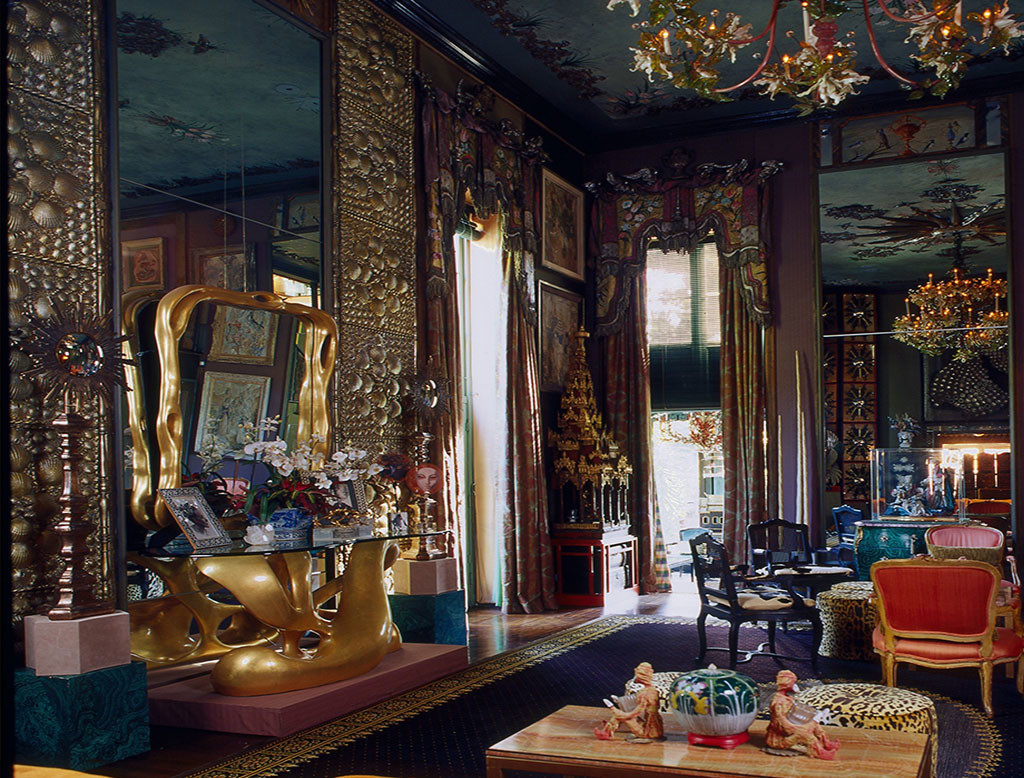
Photograph by Tim Street Porter
What drew him to the “more is more” aesthetic? Why did he want to create vibrant sensory worlds for us to live in?
Tony hated the dead white of the refrigerator door. He needed to feed his eyes as well as his soul. We aren’t just making interiors; we’re making environments for living.
Through our work, whether interiors or jewelry or extravagant party décor, we celebrate the individual, with style created especially for a person or a family. We rarely use the same materials twice, and create custom designs in furniture, fabrics and rugs, right down to mixing the paint colors ourselves in order to obtain the quality for our clients that we’re seeking.
For Tony, and now me, no amount of effort is too great to create beauty and achieve our goal of inspiring individuality and creativity in our clients. As Tony would say, the least common denominator is the enemy!
What was his opinion of modernism?
The interesting thing is that Tony’s work is not elaborate. If you look at it closely, it is extremely simple… the materials themselves are simple, every day, but treated like rare jewels.
In fact, I like to say that Tony Duquette used non-traditional materials to gain traditional effects. That was the secret of his genius, his refinement; he made burlap look like velvet and gold paper look like 18K gold. Mix all that up with priceless French or Venetian furniture, and voila, you have what on the surface looks like an elaborate interior.
But that is the magic. He never took the priceless antiques seriously… and if he wanted to cover them in leopard skin or paint the frames coral or spray emerald green flocking all over them, he did, because he knew it would work. This was his charm; he was a magician, and he knew the incantations to use to cast a spell. This type of rarified luxury design is the very essence of modernism.
As for modern-minimalist interiors, he didn’t pay any attention to them; he didn’t care what other people were doing. His work was honest… I once asked Tony, ‘Why do your clients hire you? And he said, ‘Because they can have anything in the world, all the Impressionist paintings and fine French furniture money can buy, but I can offer them something that nobody else can—completely original and personal interiors, made only for them.’
His clients, by the way, had plenty of Impressionist paintings and fine French furniture, but it was the way we put it all together for them that set their interiors apart.
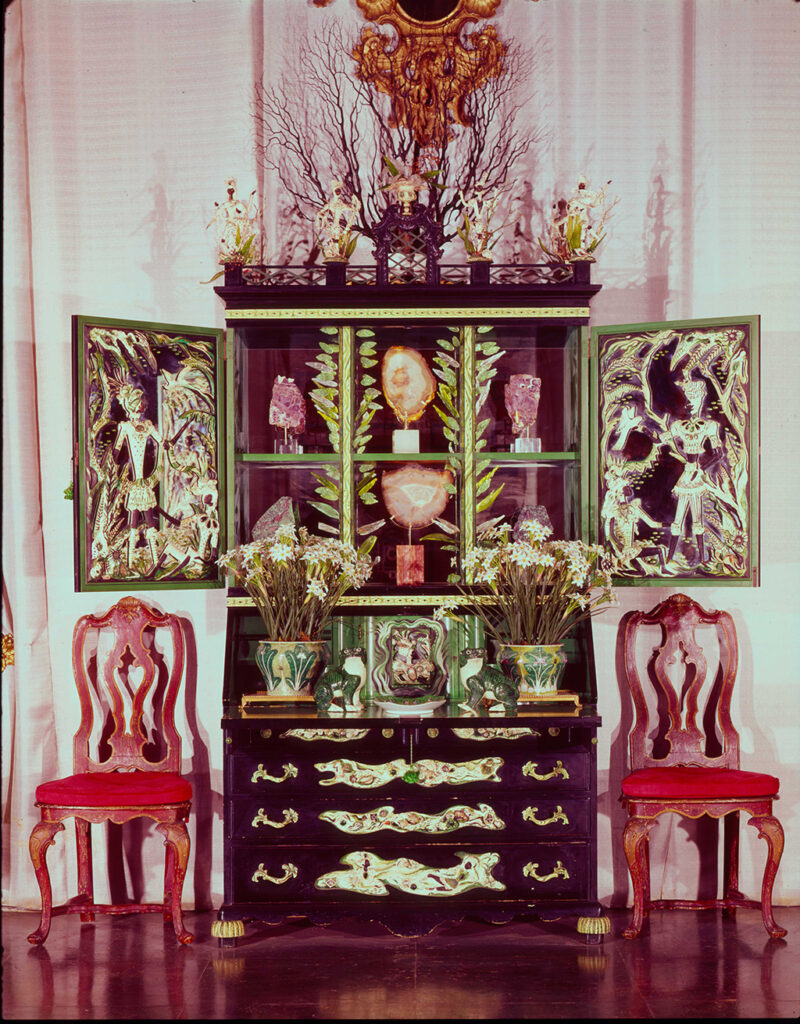
Did Los Angeles influence his aesthetic?
Tony said that Los Angeles during WWII was the most glamorous place on earth.
He was in the right place at the right time. He was present for the postwar boom in housing, the growth of the aerospace industry, the invention of television, and the creation of the new LACMA and the Music Center, for which he decorated all three theaters.
Tony could have been a much more famous designer if he had moved to New York, but he loved Los Angeles and the freedom of movement here. He had sunshine all year long and loved being outside in nature. Los Angeles was his favorite place.
How did Mr. Duquette inform American design during his lifetime?
Tony’s work was always about 10 years ahead of its time. His aesthetic influenced the world through his early work for MGM, creating costumes and sets for Fred Astaire musicals with director Vincente Minnelli, and producer Arthur Freed.
In 1941, he was discovered by Elsie de Wolfe—she never stopped referring to his talent as ‘genius’—and her recognition brought Tony Duquette to the attention of the Louvre, and in 1951, the [museum] invited him to represent the Decorative Arts of the Middle of the 20th Century, which was a forward-thinking idea, since at the time he was doing his own version of Neo-Baroque decoration, using antlers, feathers and shells, which he called Natural Baroque, as opposed to the minimalist chrome and black leather of Mies or Charles Eames, for example.
How is Tony Duquette Studios doing the same today?
Tony Duquette was always true to his vision; he never compromised. If a client didn’t like what Tony wanted, then he would just walk away … he was always true to himself and that’s why his work is so good. This is the way we work today—no compromises, pure design, right from the gut; whether it’s jewelry, furniture, lighting, textiles or carpets, our vision is very clear, just the way Tony taught me after almost 30 years of design collaboration.
Like in Tony’s day, each job is individual. We like good design—it doesn’t matter if it’s pure Louis XVI or Mid-Century Modern or anything in between. We do it our way, with a lot of taste, style and imagination, keeping the clients’ own individuality in mind.
How significant is Dawnridge to you?
My most important tribute to Tony and his wife Elizabeth was to purchase their beloved house and preserve it as a repository for their work—his sculptures and furniture, and their paintings. Dawnridge was considered a teardown in Beverly Hills sitting in the middle of an immense tropical garden.
I have redecorated the house very sensitively, using only items made by the Duquettes. It’s a major tribute to their combined talents, hers complementing his in a big way! We use the house as our office, where we meet clients and discuss business.
What might surprise us to learn about Tony Duquette?
Tony was a child of the Depression. His mother taught him about quality. He knew and understood value. He knew those ‘expensive’ things would last forever. He was actually frugal but in an extravagant way. He hated waste and saved everything.
Tony felt that ‘one-of-a-kind’ is the very definition of the word luxury. He always used to say, ‘Beauty, not luxury, is what I value,’ and that is one of the precepts we adhere to at Tony Duquette, Inc., today.
Tony Duquette Displaying the Neckless He Designed for the Duchess of Windsor on a Mermaid Sculpture at His One Man Exhibition at the Louvre Museum, Paris.
1951 (Photographer Unknown, Photo Courtesy of Tony Duquette Inc.)
Tony Duquette in Front of His Portrait Painted by Marion Pike. (Photographer Unknown)
The Elsie De Wolfe Cabinet, Created by Tony Duquette Circa 1941 for “After All” Elsie De Wolf’s Beverly Hills Residence. (Photographer Unknown, Image Courtesy of Tony Duquette Inc.)



